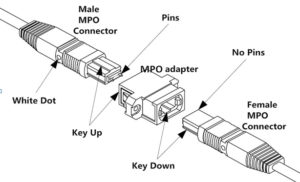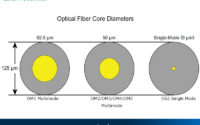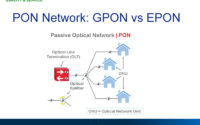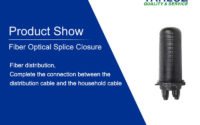How to Understand the Polarity of MPO Correctly?
What is the polarity and the connector of the MPO?
Generally, an optical link requires two fibers to complete the entire transmission process. For example, the optical module includes a receiving end and a transmitting end. When used, it must ensure that the receiving end and the transmitting end are in an interconnected state, and the matching between the transmitting end (TX) and the receiving end (Rx) at both ends of the optical fiber link is Called polarity. What ‘s more ,the MPO/MTP connector is also play an important role in wiring. It is a multi-innovative, high-performance fiber optic connector that has enhanced optical and mechanical performance. The special design (shown in the following figure) of MTP/MPO connector ensures the accuracy of the polarity in the MTP/MPO network system.

Three types of the polarity
MPO Trunk Cable Type A: Type A cable also known as straight cable, is a straight through cable with a key up MPO connector on one end and a key down MPO connector on the opposite end. This makes the fibers at each end of the cable have the same fiber position. For example, the fiber located at position 1 (P1) of the connector on one side will arrive at P1 at the other connector. The fiber sequence of a 12 fiber MPO Type A cable is showed as the following:

MPO Trunk Cable Type B: Type B cable (reversed cable) uses key up connector on both ends of the cable. This type of array mating results in an inversion, which means the fiber positions are reversed at each end.The fiber at P1 at one end is mated with fiber at P12 at the opposing end. The following picture shows the fiber sequences of a 12 fiber Type B cable.

MPO Trunk Cable Type C: Type C cable (pairs flipped cable) looks like Type A cable with one key up connector and one key down connector on each side. However, in Type C each adjacent pair of fibers at one end are flipped at the other end.For example, the fiber at position 1 on one end is shifted to position 2 at the other end of the cable. The fiber at position 2 at one end is shifted to position 1 at the opposite end etc. The fiber sequence of Type C cable is demonstrated in the following picture.

Conclusion
MPO/MTP technology, which is of high density, flexibility and reliability with scalable, upgradeable properties, is one of the contributors that lead the migration to 40/100GbE. But how to understand the polarity of the MPO products correctly has become an important issue for the network stuff. After reading these related contents about polarity, how much do you know?
Related Posts

How to Choose Multimode Fiber and Single Mode Fiber?

PON Network: the Differences of GPON and EPON
